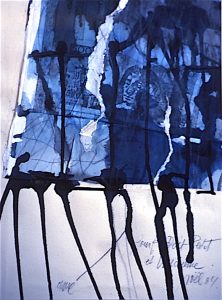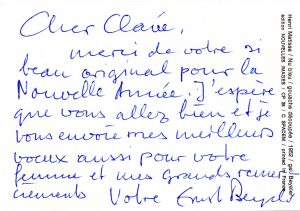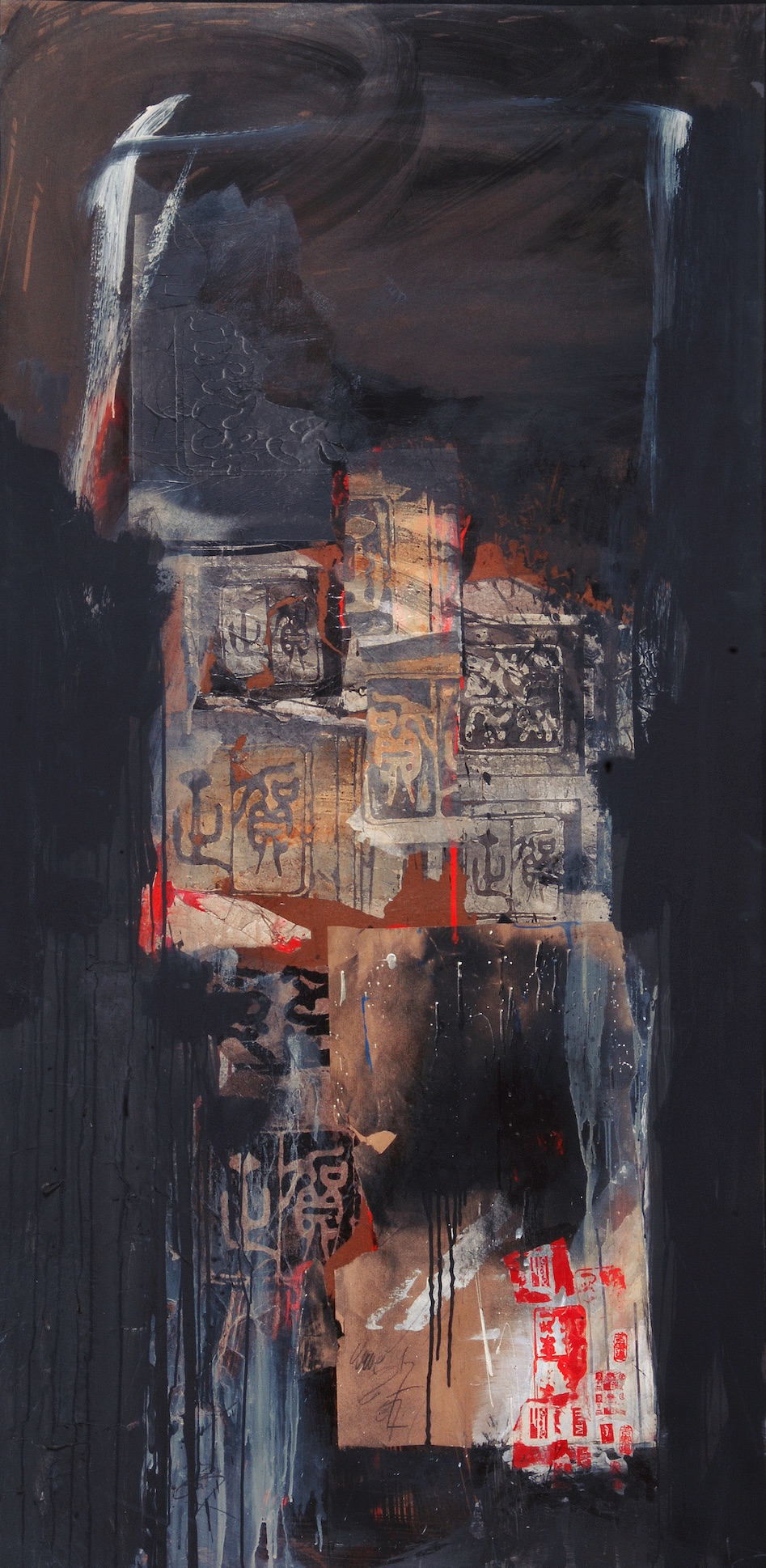It is greetings season! Health, happiness, prosperity…This tradition of rather conventional wishes is dating back a few centuries. The format of the greeting card that we know today is more recent, since it appears in 1843 when Sir Henry Cole decides to sell a lithographed card designed by the painter John Callcot Horsley. It is modern and attractive, and spreads out rapidly as it frees people from journeys to visit one another. But why naming this almost 2 meters high painting Bonne Année (happy new year)?


From the seventies onwards, Clavé has been known to send personalized greetings to his close friends, some original collages of small size and other types of artistic kind thoughts to his intimate circle.
This painting is obviously not about that. The panel is long and thin (less than a metre wide), the geometrical composition accentuates the overall slenderness and is built upon a central axis composed of collages of monochromic “hankos” and long tears of paint. It feels like these collages are standing out from the black and brown background, recalling a window framed with dark mullions. The work is however not gloomy at all. The shredded and humble papers and the drips of red and white paint are indeed suddenly illuminating the subtle tones, reminding us of walnut stains. The alchemy created by the artist transmutes the ambient darkness into sparkles of light. Clavé finishes his painting on the 1st January of 1987, and titles it “Bonne année” (“Happy new year”).

